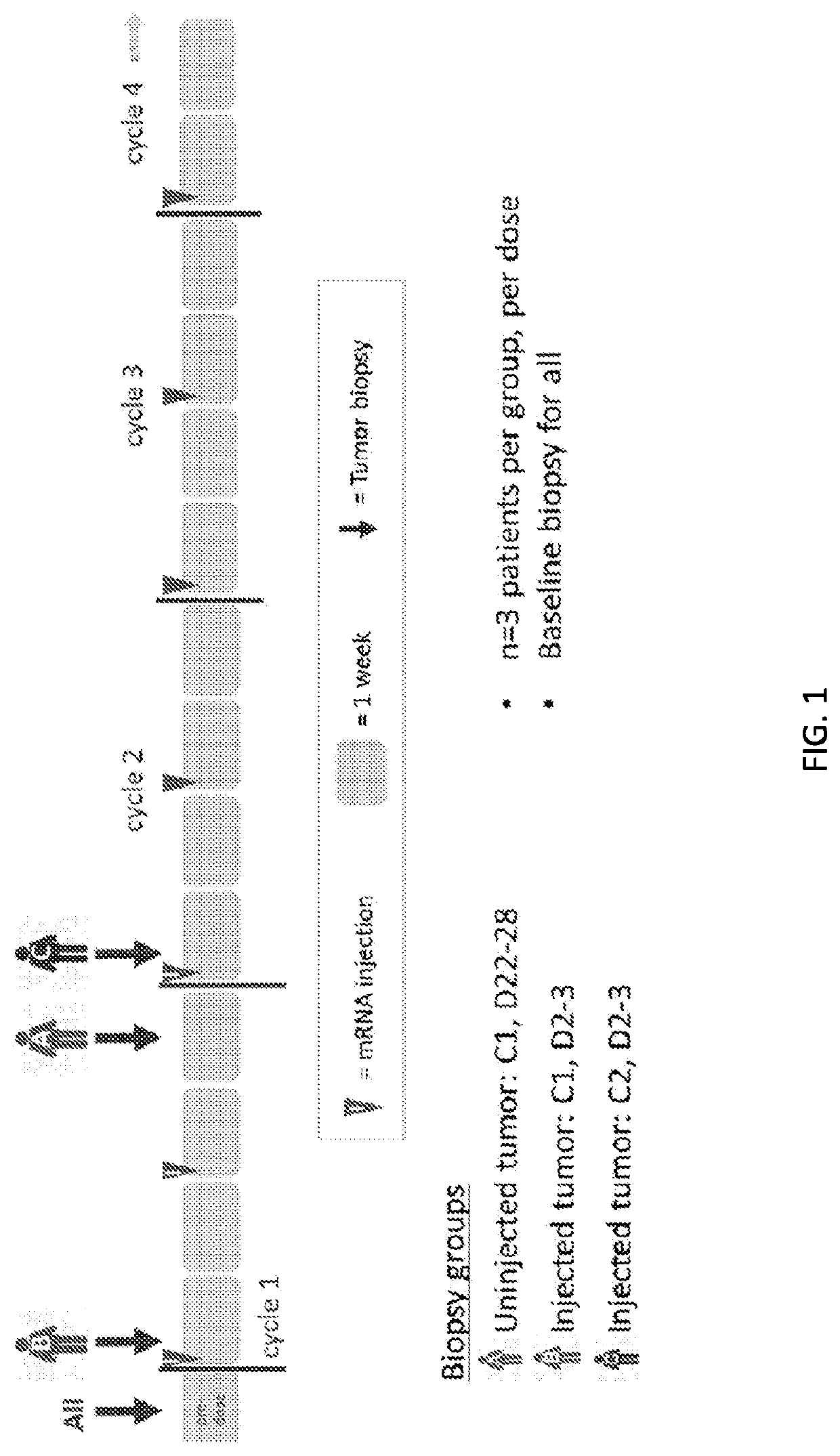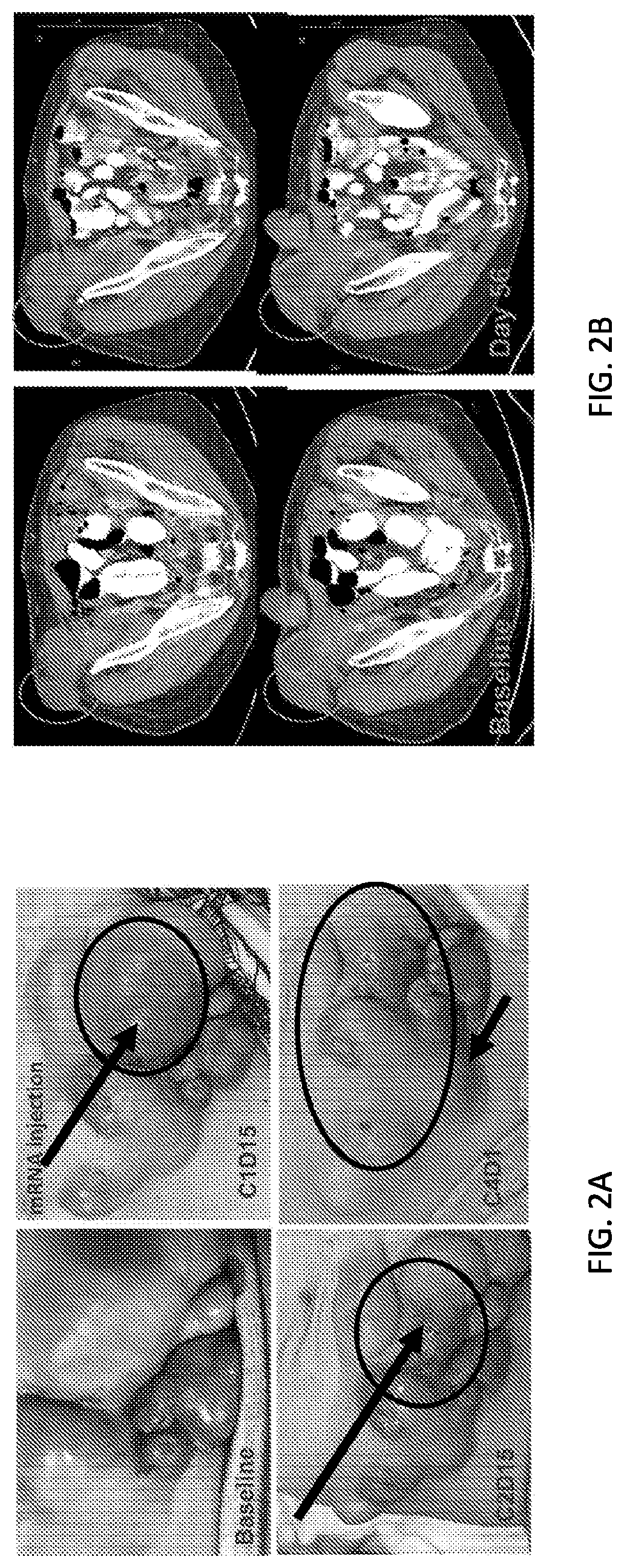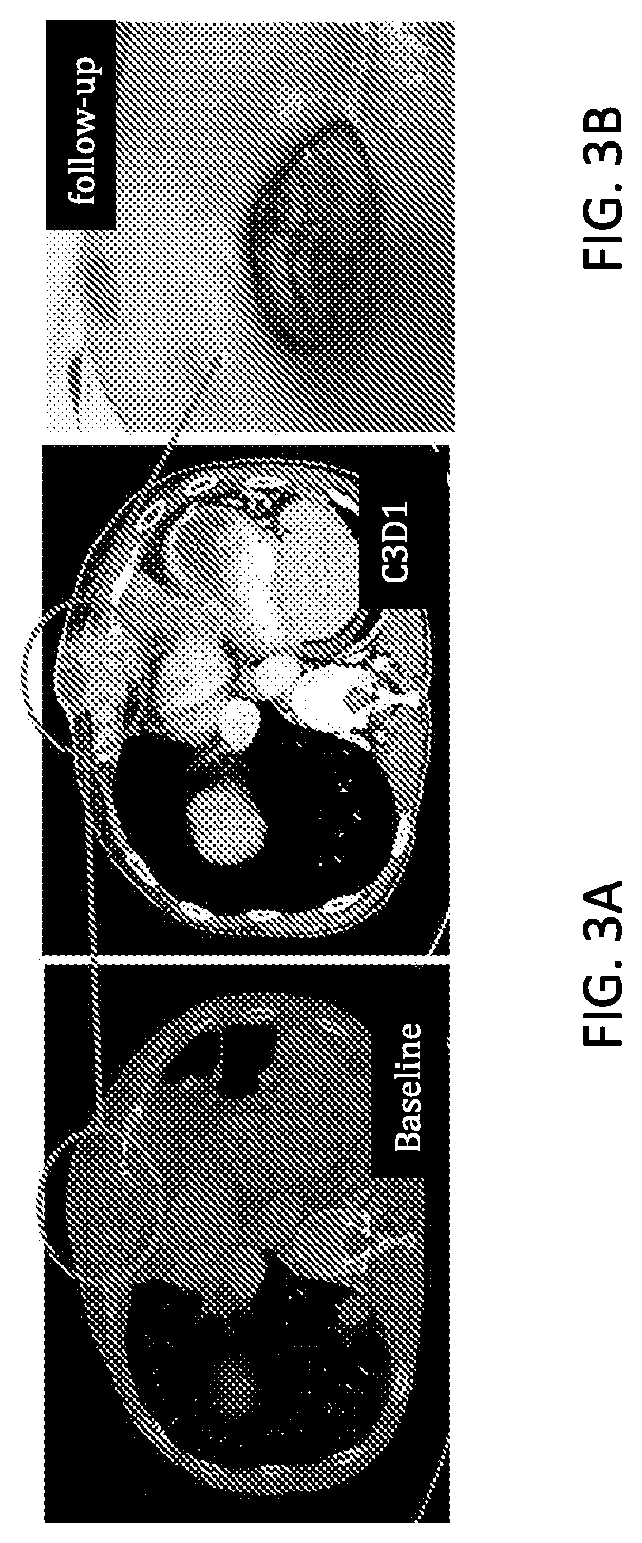Use of mRNA encoding ox40l to treat cancer in human patients
- Summary
- Abstract
- Description
- Claims
- Application Information
AI Technical Summary
Benefits of technology
Problems solved by technology
Method used
Image
Examples
embodiment 3
E4. The method of embodiment 3, wherein the uninjected tumor is at a location proximal to the injected tumor in the patient.
E5. The method of embodiment 3, wherein the uninjected tumor is at a location distal to the injected tumor in the patient.
E6. The method of any one of embodiments 3-5, wherein treatment results in a reduction in size or inhibition of growth of an uninjected tumor through an abscopal effect in the patient.
E7. The method of any one of the preceding embodiments, wherein treatment results in increased expression of human OX40L polypeptide in the tumor.
E8. The method of any one of the preceding embodiments, wherein treatment results in increased expression of human OX40L polypeptide in immune cells in the tumor microenvironment.
E9. The method of any one of the preceding embodiments, wherein the anti-tumor immune response in the patient comprises T cell activation, T cell proliferation, and / or T cell expansion.
embodiment 9
E10. The method of embodiment 9, wherein the T cells are CD4+ T cells.
E11. The method of embodiment 9, wherein the T cells are CD8+ T cells.
E12. The method of embodiment 9, wherein the T cells are CD4+ T cells and CD8+ T cells.
E13. The method of any one of embodiments 9-12, wherein the anti-tumor immune response results in a reduction in size or inhibition of growth of the injected tumor.
E14. The method of any one of embodiments 9-12, wherein the anti-tumor immune response results in a reduction in size or inhibition of growth of an uninjected tumor through an abscopal effect in the patient.
E15. The method of any one of the preceding embodiments, wherein the patient is administered a dose of mRNA selected from 1.0-8.0 mg, 1.0-6.0 mg, 1.0-4.0 mg, and 1.0-2.0 mg of mRNA.
E16. The method of any one of the preceding embodiments, wherein the mRNA is administered in a dosing regimen selected from 7 to 28 days, 7 to 21 days, 7 to 14 days, 28 days, 21 days, 14 days and 7 days.
E17. The method...
embodiment 19
E20. The method of embodiment 19, wherein the patient is administered a dose of 1.0-6.0 mg mRNA.
E21. The method of embodiment 19, wherein the patient is administered a dose of 1.0-4.0 mg mRNA.
E22. The method of embodiment 19, wherein the patient is administered a dose of 1.0-2.0 mg mRNA.
E23. The method of embodiment 19, wherein the patient is administered a dose of 1.0 mg mRNA.
E24. The method of embodiment 19, wherein the patient is administered a dose of 2.0 mg mRNA.
E25. The method of embodiment 19, wherein the patient is administered a dose of 4.0 mg mRNA.
E26. The method of embodiment 19, wherein the patient is administered a dose of 8.0 mg mRNA.
E27. The method of any one of embodiments 19-26, wherein the dose is administered every 14 days.
E28. The method of any one of embodiments 19-26, wherein the mRNA is administered every 2 weeks in a 28-day cycle.
E29. The method of any one of embodiments 19-26, wherein the mRNA is administered every 2 weeks for 1-6 months.
E30. The method of a...
PUM
| Property | Measurement | Unit |
|---|---|---|
| Fraction | aaaaa | aaaaa |
| Fraction | aaaaa | aaaaa |
| Fraction | aaaaa | aaaaa |
Abstract
Description
Claims
Application Information
 Login to View More
Login to View More - R&D
- Intellectual Property
- Life Sciences
- Materials
- Tech Scout
- Unparalleled Data Quality
- Higher Quality Content
- 60% Fewer Hallucinations
Browse by: Latest US Patents, China's latest patents, Technical Efficacy Thesaurus, Application Domain, Technology Topic, Popular Technical Reports.
© 2025 PatSnap. All rights reserved.Legal|Privacy policy|Modern Slavery Act Transparency Statement|Sitemap|About US| Contact US: help@patsnap.com



